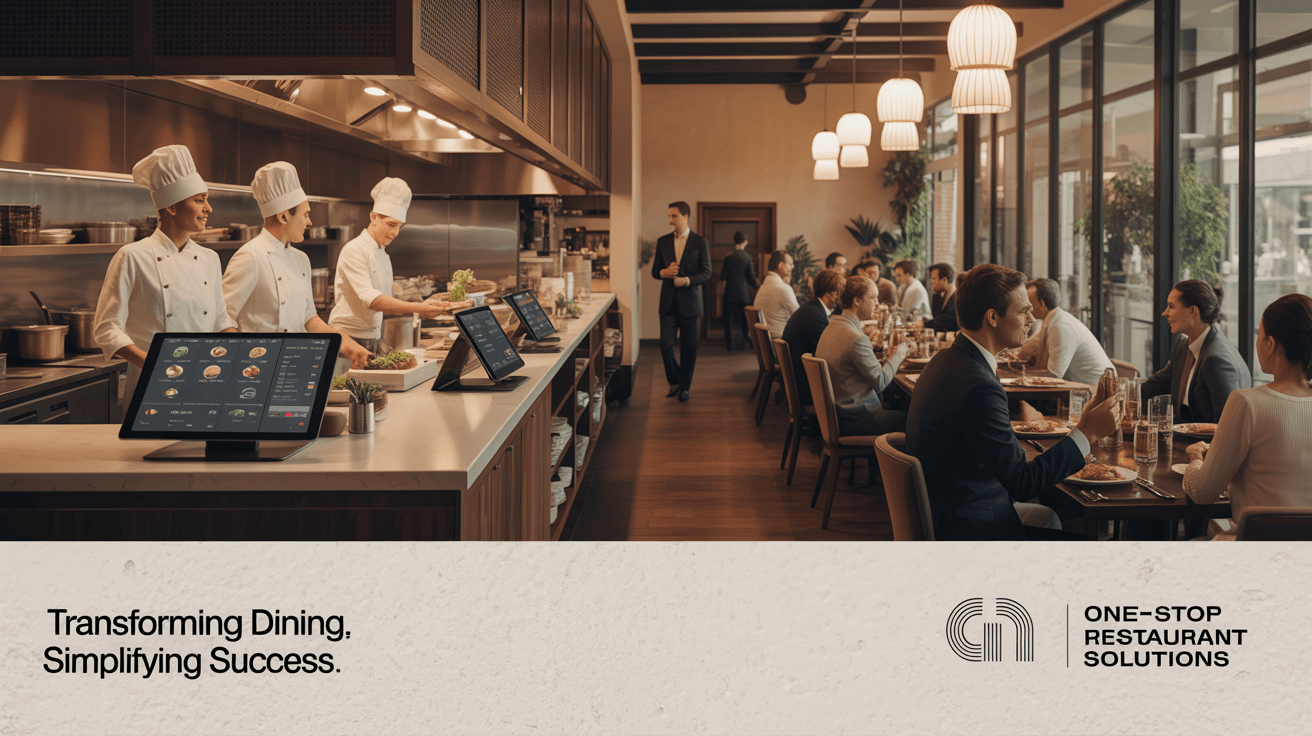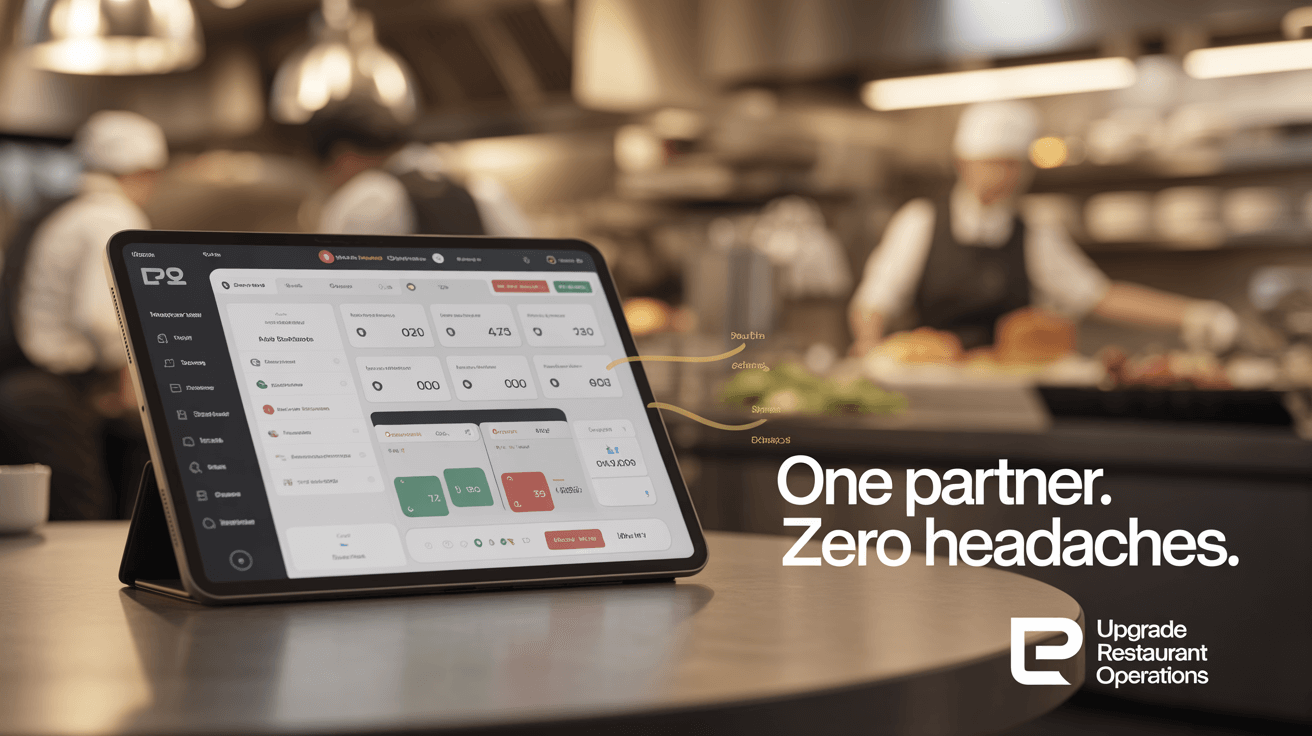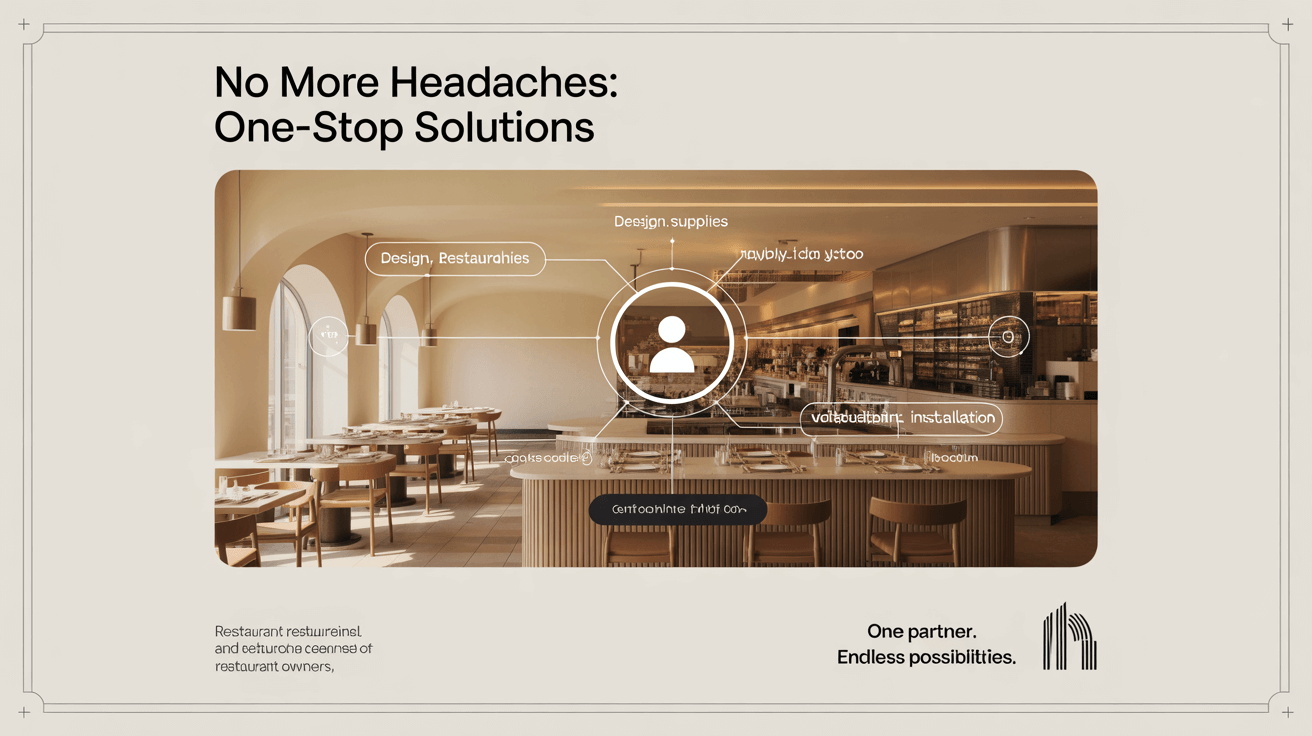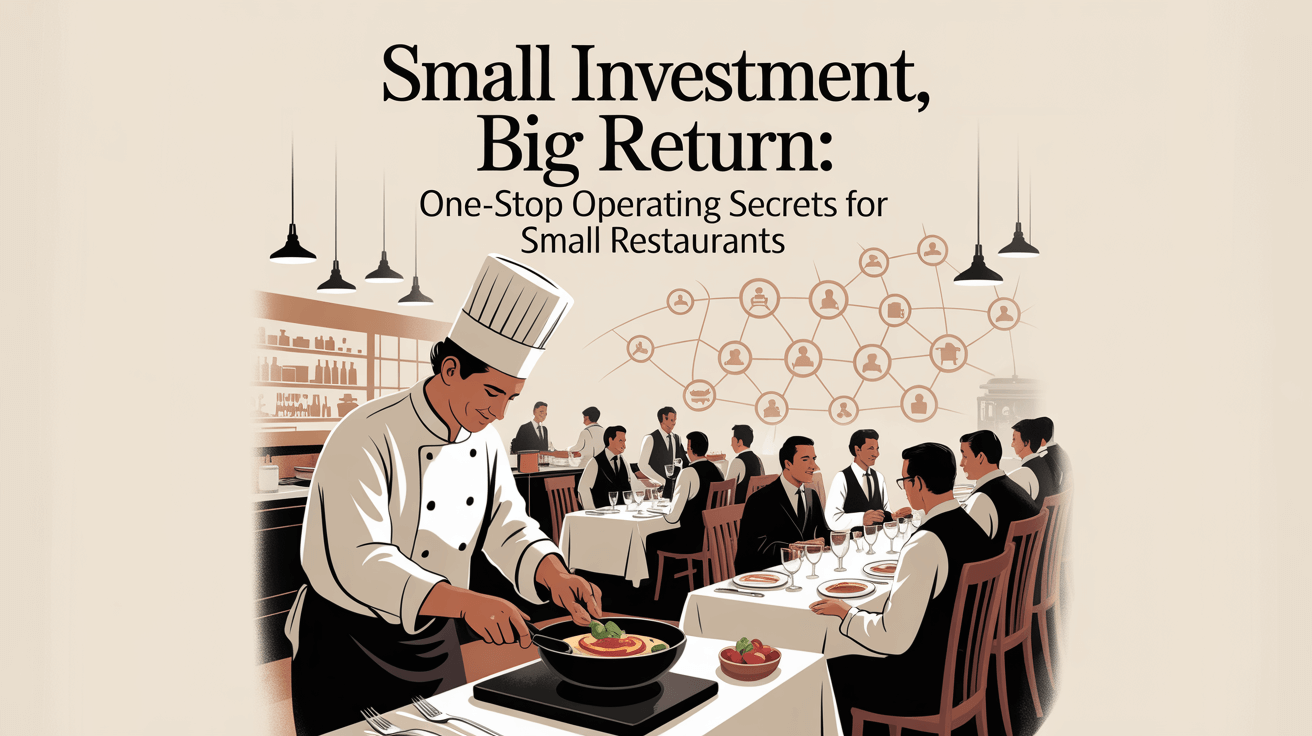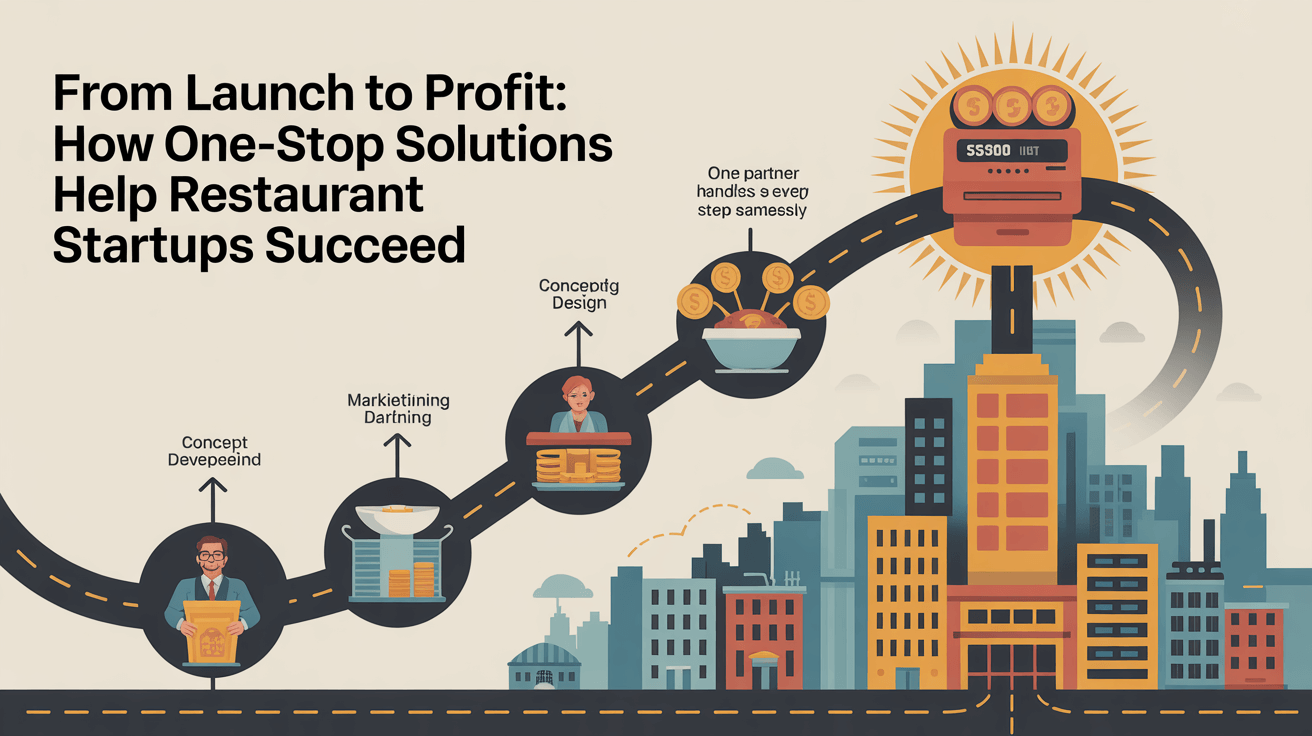The New Era of Restaurant Management: A Deep Dive into One-Stop Solutions explores how turnkey partners—from design to daily operations—transform dining businesses. But here’s the kicker… a single provider unifies every phase, slashing hassle and costs.
1. What defines a one-stop restaurant solution?
● Integrated design, supply, and install under one contract
● Unified procurement of furniture, fixtures, and equipment
● Technology integration including POS and kitchen systems
● Ongoing support, maintenance, and training services
Ready for the good part? true one-stop providers own every step.
| Service Type | Included Features |
|---|---|
| Design & Layout | 3D renderings, floor planning |
| Supply & Installation | FF\&E delivery, white-glove |
2. How do one-stop solutions streamline operations?
● Single point of contact replaces multiple vendors
● Coordinated schedules prevent installation clashes
● Centralized billing simplifies accounting
● Consolidated warranties cover all equipment
What’s the real story? streamlined workflows speed openings.
3. What impact on project timelines?
● Parallel task execution cuts closure to opening by 30%
● Just-in-time deliveries eliminate storage delays
● Real-time dashboards track milestones instantly
● Proactive alerts prevent schedule overruns
This is where it gets interesting… fast timelines mean faster revenue.
4. How are design and branding integrated?
● Custom furniture matching concept palette
● Branded signage and décor elements
● Cohesive material selections across spaces
● Theme continuity from lobby to restrooms
But here’s the kicker… integrated design deepens guest connection.
| Design Element | Benefit |
|---|---|
| Custom FF\&E | Reinforced brand identity |
| Signage & Décor | Consistent guest experience |
5. How does supply chain management improve?
● Bulk purchasing reduces unit costs
● Vendor-managed inventory cuts stockouts
● Single-vendor logistics lowers freight complexity
● Predictive restocking via usage analytics
Ready for the good part? smarter supply equals smoother service.
6. What role does vendor coordination play?
● One-stop provider manages all sub-vendors
● Standardized contracts enforce quality
● Central issue resolution avoids blame-shifting
● Regular performance reviews keep standards high
What’s the real story? consolidated oversight eliminates gaps.
7. How is technology integration handled?
● POS, kitchen display, and guest apps preconfigured
● Network infrastructure installed and secured
● Staff training on unified dashboard systems
● Ongoing software updates and support
This is where it gets interesting… tech sync reduces errors.
| Tech Component | Integration Feature |
|---|---|
| POS & KDS | Real-time order tracking |
| Guest Wi-Fi & Apps | Seamless guest experience |
8. How are finance and procurement optimized?
● Fixed-price bundles prevent surprise costs
● Net-30/60 terms ease cash flow
● Lease and rent-to-own options spread capital spend
● Automated invoicing through single portal
But here’s the kicker… financial clarity builds confidence.
9. What training and support are provided?
● On-site staff workshops for all equipment
● Digital training modules accessible 24/7
● Preventive maintenance plans scheduled quarterly
● Dedicated helpdesk for urgent issues
Ready for the good part? well-trained teams boost uptime.
10. How do compliance and permits fit in?
● Provider secures health, safety, and building permits
● Ensures ADA and fire-code adherence
● Coordinates inspections with local agencies
● Delivers full documentation and as-built drawings
This is where it gets interesting… compliance support fast-tracks approval.
| Compliance Area | Provider Role |
|---|---|
| Health & Safety Permits | Submission & follow-up |
| Building & ADA Codes | Plans and inspections |
11. How does scalability work for growing chains?
● Template-based rollouts for new locations
● Centralized project management for multi-site launches
● Volume discounts on phased purchases
● Shared analytics driving uniform standards
What’s the real story? scalable models fuel rapid expansion.
12. How are costs controlled end to end?
● Bundled pricing cuts 10–20% vs. separate buys
● Phased billing aligned with deliverables
● Contingency budgets built into contracts
● Transparent reporting on every line item
But here’s the kicker… cost visibility prevents budget creep.
13. What quality assurance measures exist?
● Factory acceptance tests before shipping
● On-site inspections at delivery and install
● Post-launch performance audits
● Guest feedback loops for continuous improvement
Ready for the good part? unified QA stops defects in their tracks.
14. How do updates and refreshes integrate?
● Annual refresh bundles for furniture and tech
● Seasonal décor swaps managed end to end
● Software upgrades bundled with hardware refresh
● Retrofit options for evolving needs
This is where it gets interesting… seamless refreshes keep spaces current.
| Refresh Type | Timing |
|---|---|
| Annual FF\&E Updates | Every 12 months |
| Tech & Software Upgrades | Every 6–9 months |
15. What does the future hold for one-stop solutions?
● AI-driven predictive maintenance
● Virtual reality for immersive design previews
● Sustainable sourcing becoming standard
● Blockchain for transparent supply chains
What’s the real story? innovation keeps operations ahead of the curve.
Conclusion
One-stop restaurant solutions unify design, supply, install, and support—accelerating openings, cutting costs, and ensuring quality. Adopt this integrated model to focus on guests while operations hum flawlessly.
FAQ
Q1: Can I use one-stop solutions alongside existing vendors?
Yes—providers can integrate select legacy partners seamlessly.
Q2: How quickly can I open a new site?
Small venues launch in 8–10 weeks; larger formats up to 16 weeks.
Q3: Are bundled warranties more expensive?
Bundled packages often include extended coverage at no extra cost.
Q4: What financing options are common?
Leases over 3–5 years or rent-to-own with fixed monthly payments.
Q5: How do I track project status?
You’ll receive access to real-time dashboards and milestone reports.

